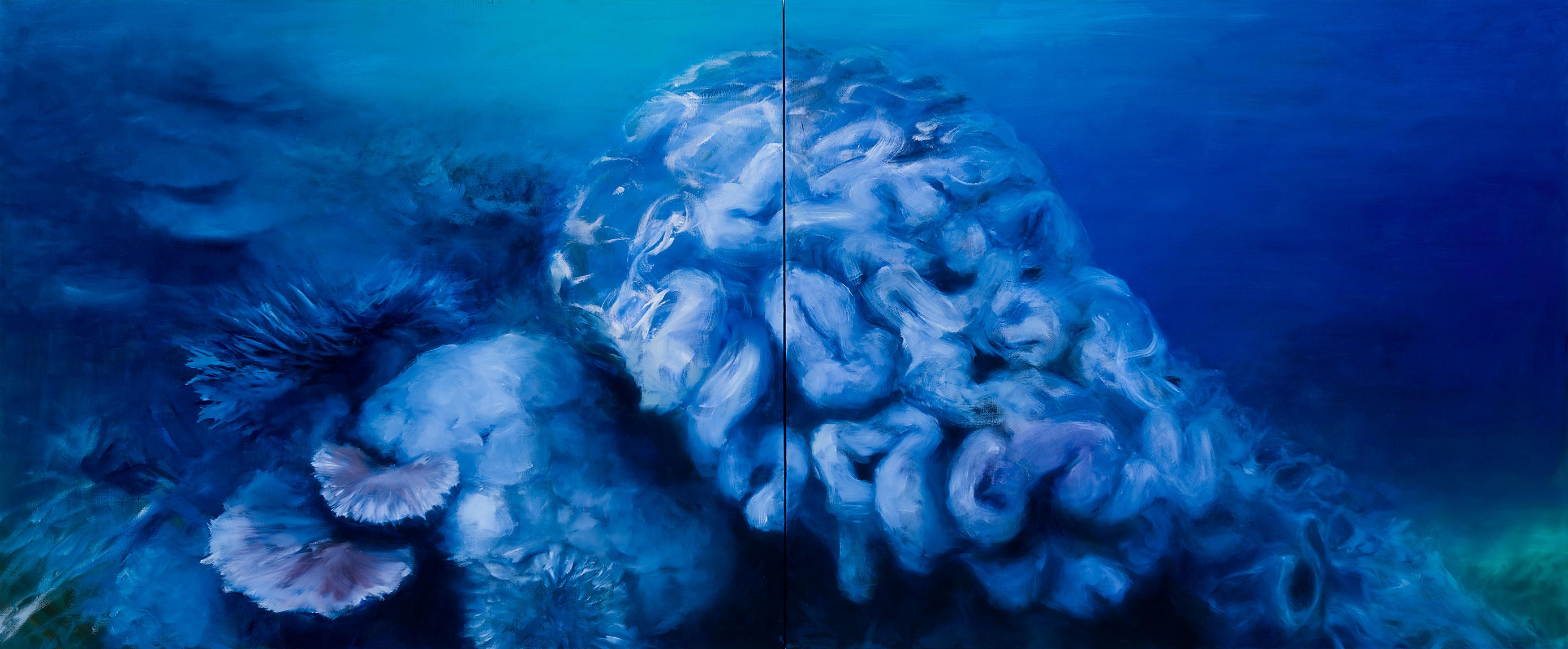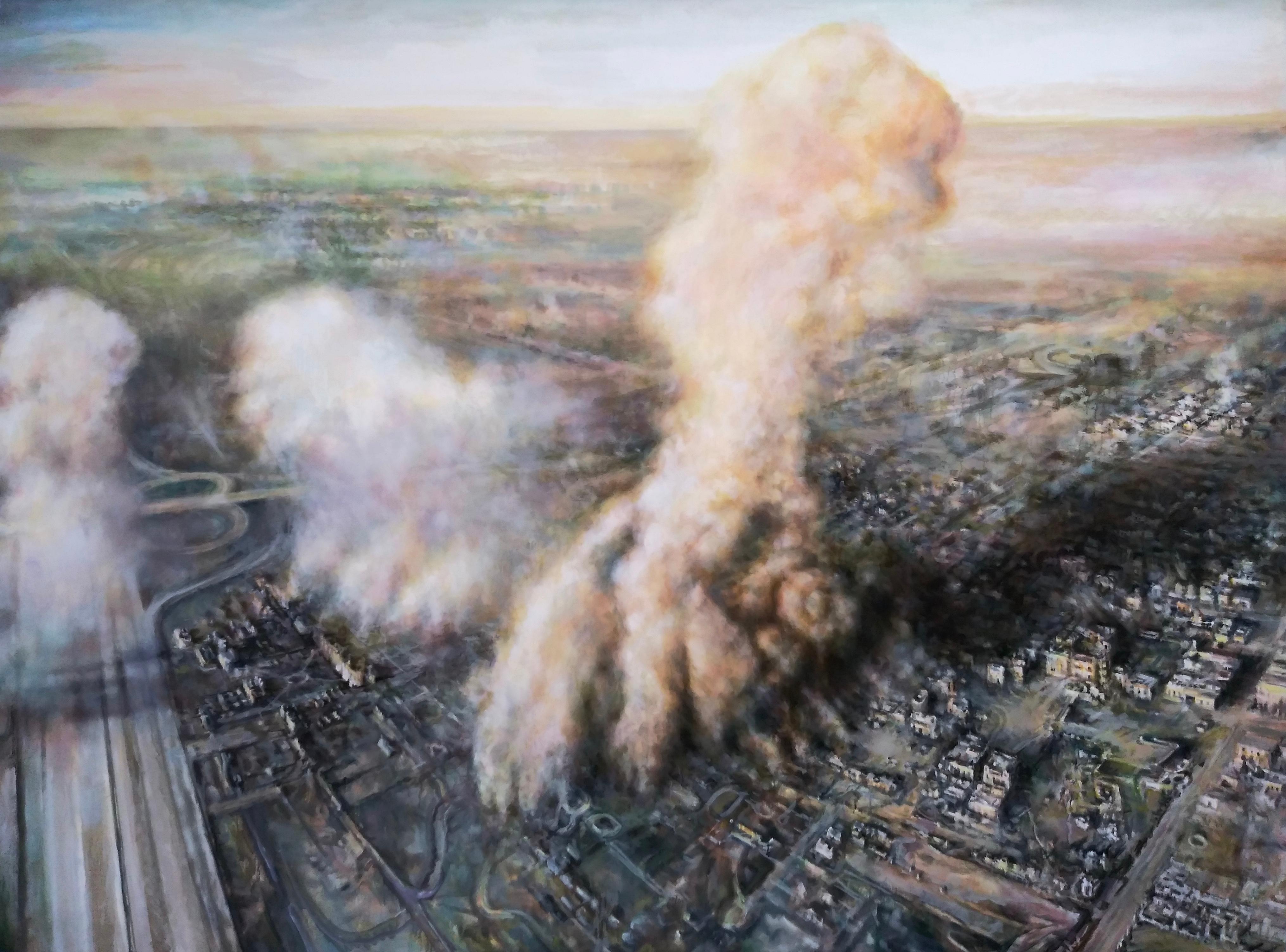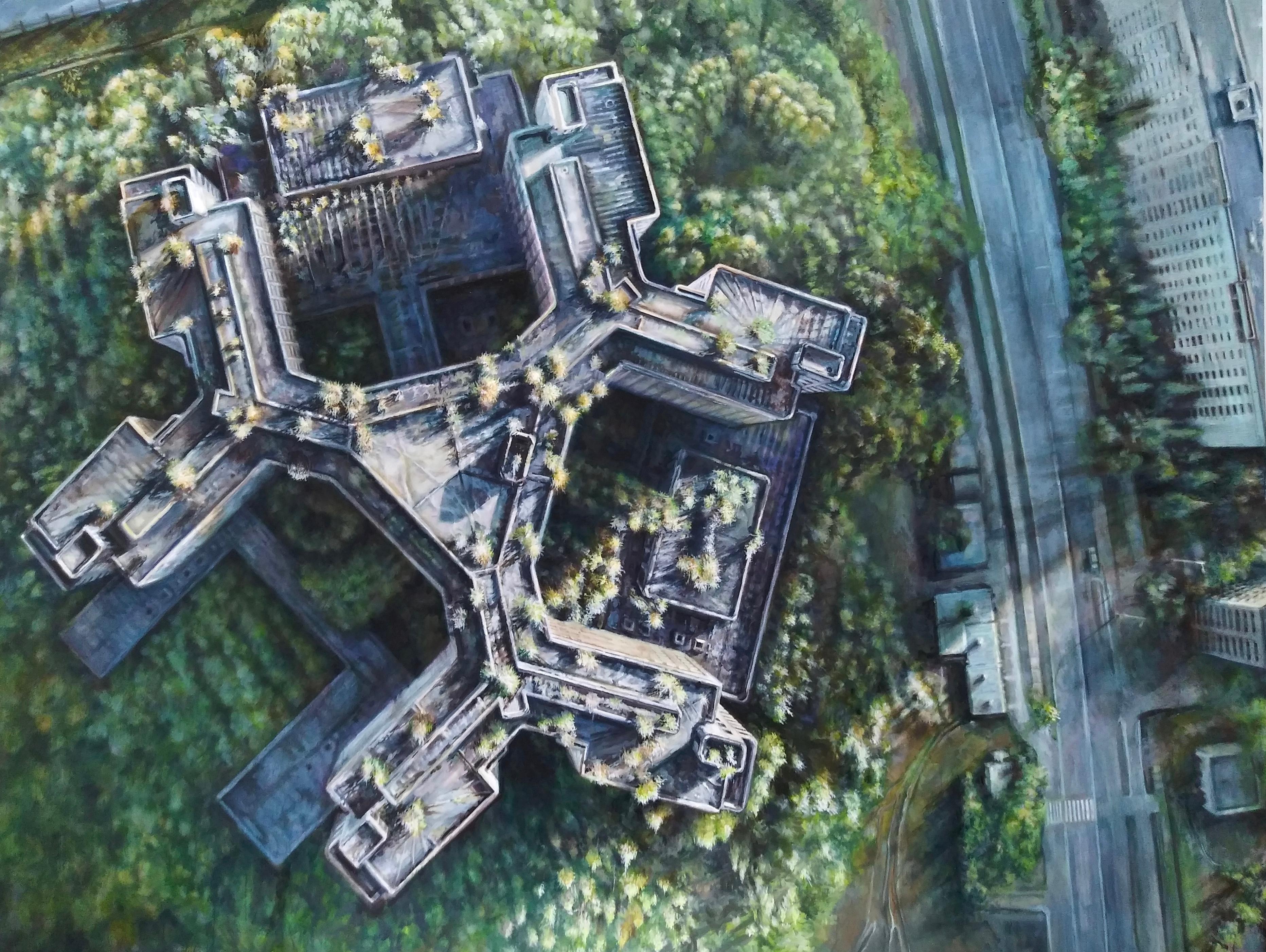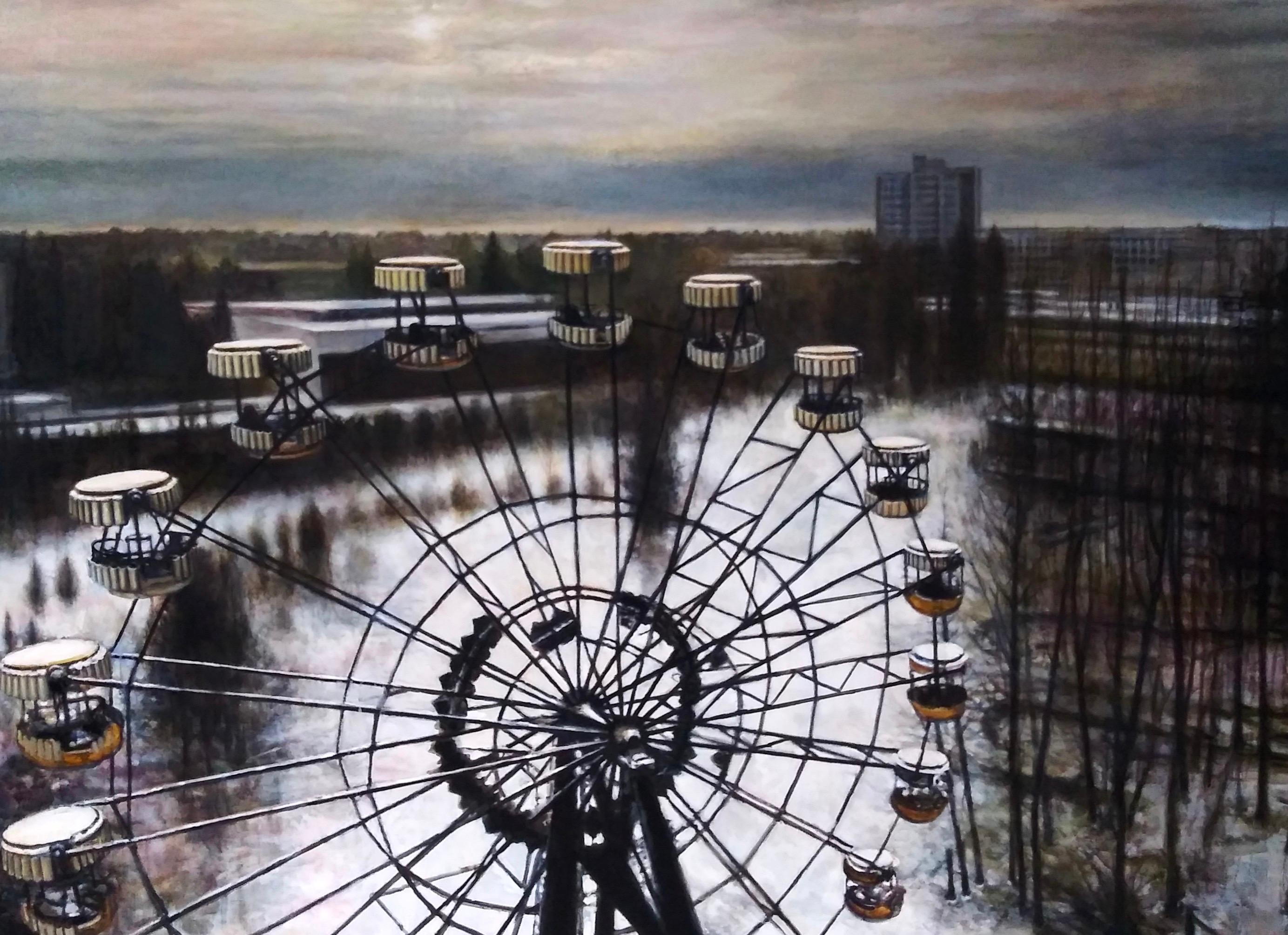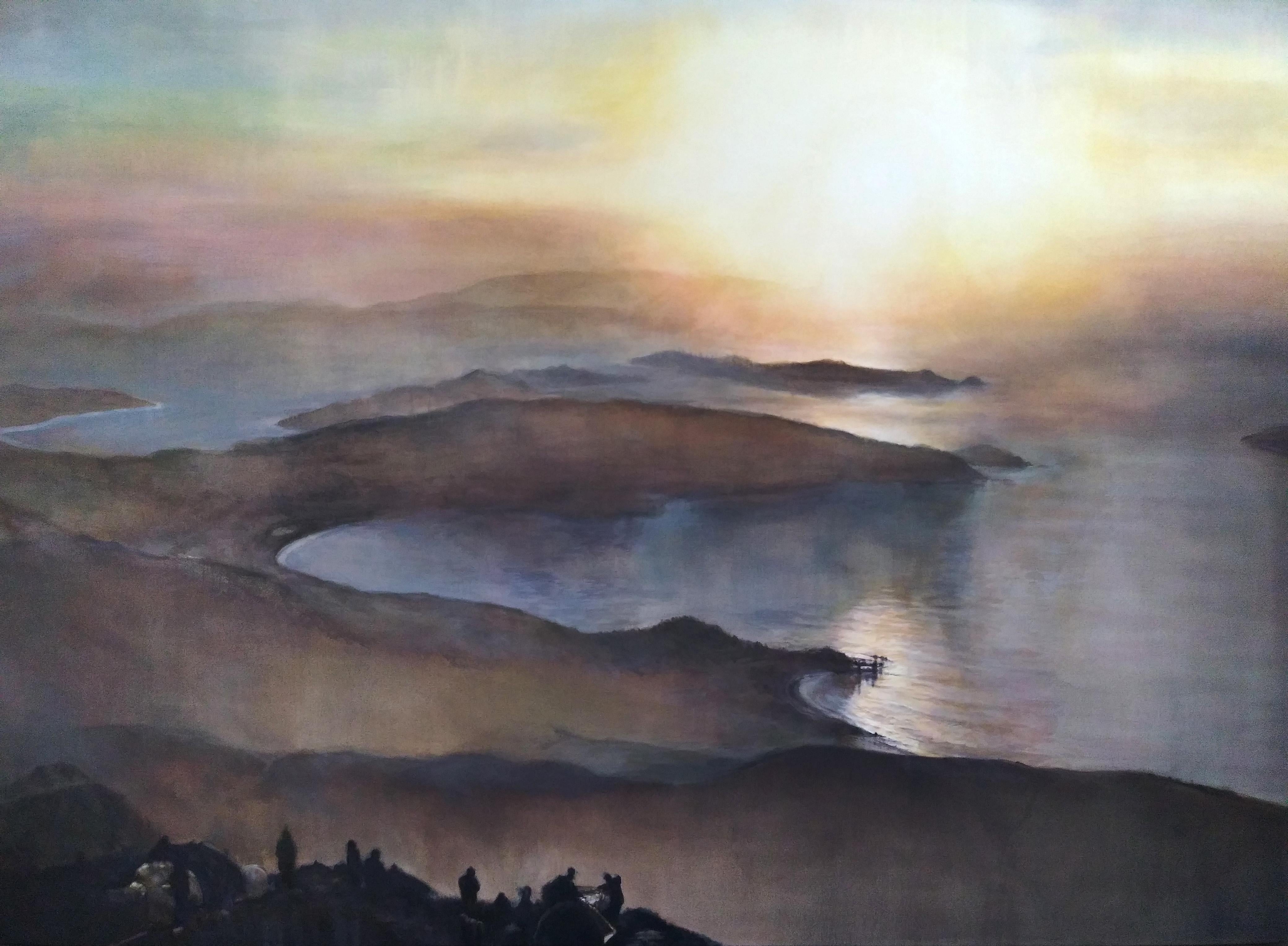Items Similar to "Back Yards, New Hope"
Want more images or videos?
Request additional images or videos from the seller
1 of 5
Richard Wedderspoon"Back Yards, New Hope"c. 1935
c. 1935
About the Item
Jim's of Lambertville Fine Art Gallery is proud to present this piece by Richard Wedderspoon (1889 - 1976).
Richard Wedderspoon was an important member of the New Hope Art Colony as both an Impressionist and Modernist painter. Wedderspoon was not only a respected painter, but also a teacher who spent summers at his Bucks County home and the school year at Syracuse University where he was Professor of painting. He was born in Red Bank, New Jersey and first studied art at the Carnegie Institute in Pittsburgh. He continued his studies at the Corcoran School of Art in Washington, and at age twenty four, he enrolled at the Pennsylvania Academy of the Fine Arts studying with Henry McCarter and Daniel Garber. While there his roommates were Charles Garner and Lloyd Ney. Wedderspoon began friendships with fellow artists, Charles Hargens, Clarence Johnson and Stanley Reckless. All would become part of the New Hope art scene in the future. Both McCarter and Garber recognized Wedderspoon's talent and were generous with their time and criticism. Garber frequently brought Wedderspoon back to his Lumberville home for weekends and a long lasting friendship resulted. In 1915 and 1916 Wedderspoon was twice honored with the Cresson Traveling Scholarship from the Pennsylvania Academy.
Returning from World War I, he lived in Chicago for a time traveling to the Missouri Ozarks and western Michigan to paint. He and his wife also took a long trip to paint in Great Britain, France and Italy. In 1923 Wedderspoon joined the faculty of Syracuse University where he remained until 1949. In 1926 he bought land on Phillips Mill Road near New Hope and built a colonial home where he spent summers. Too busy during the academic year to concentrate on his painting, he looked forward to his summers in New Hope for artistic inspiration.
Upon retirement he moved there permanently and finally to a smaller home in nearby Yardley.
Wedderspoon was a versatile artist, able to paint well, both impressionist and modernist landscapes. Such being the case, most of his paintings, and clearly the most identifiable of his styles, is a combination of the two. The most sought after of his works are landscapes painted in and around New Hope during the 1920s and 1930s which are of an impressionist style, having a slight modernist influence.
Wedderspoon exhibited at the Pennsylvania Academy of the Fine Arts, the Corcoran Gallery biennials, the Peabody Institute in Baltimore, the Art Institute of Chicago, the Detroit Institute of Fine Art, the Chicago Arts Club, the Philadelphia Art club, the Phillips Mill near New Hope and the Syracuse (Everson) Art Museum.
- Creator:Richard Wedderspoon (1879-1976, American)
- Creation Year:c. 1935
- Dimensions:Height: 25 in (63.5 cm)Width: 30 in (76.2 cm)
- Medium:
- Period:
- Condition:
- Gallery Location:Lambertville, NJ
- Reference Number:
About the Seller
5.0
Vetted Seller
These experienced sellers undergo a comprehensive evaluation by our team of in-house experts.
Established in 1997
1stDibs seller since 2014
36 sales on 1stDibs
Typical response time: 6 hours
- ShippingRetrieving quote...Ships From: Lambertville, NJ
- Return PolicyThis item cannot be returned.
More From This SellerView All
- "Alley Fiends"By John R. GrabachLocated in Lambertville, NJJim’s of Lambertville is proud to offer this artwork by: John R. Grabach (1886 - 1981) John Grabach was a highly regarded New Jersey artist, teacher, and author of the classic text...Category
1930s American Impressionist Landscape Paintings
MaterialsCanvas, Oil
- "Forest Strongholds"By John F. CarlsonLocated in Lambertville, NJSigned lower right. Complemented by a hand carved and gilt frame. Exhibited at the National Academy of Design, 1928Category
20th Century American Impressionist Landscape Paintings
MaterialsCanvas, Oil
- "Solebury Valley"By William Langson LathropLocated in Lambertville, NJSigned lower right. Complemented by a period frame. William L. Lathrop (1859-1938) Deemed “Father of the New Hope Art Colony”, William Langson Lathrop was born in Warren, Illinois. He was largely self-taught, having only studied briefly with William Merritt Chase in 1887, at the Art Students League. Lathrop first moved east in the early 1880s, and took a job at the Photoengraving Company in New York City. While there, he befriended a fellow employee, Henry B. Snell. The two men became lifelong friends and ultimately, both would be considered central figures among the New Hope Art Colony. Lathrop's early years as an artist were ones of continuing struggle. His efforts to break through in the New York art scene seemed futile, so he scraped enough money together to travel to Europe with Henry Snell in1888. There he met and married an English girl, Annie Burt. Upon returning to New York, he tried his hand at etching, making tools from old saw blades...Category
1910s American Impressionist Landscape Paintings
MaterialsCanvas, Oil
- Winter MoonlightBy George William SotterLocated in Lambertville, NJsigned lower rightCategory
1910s American Impressionist Landscape Paintings
MaterialsCanvas, Oil
- "Cedar Hill"By George William SotterLocated in Lambertville, NJJim’s of Lambertville is proud to offer this artwork. Signed lower right. Original Period Newcomb Macklin Frame George William Sotter (1879 - 1953) Born in Pittsburgh on September 25, 1879, Sotter began his art education with local teachers and with Henry G. Keller, who had studied in various German academies. Keller, known for his superb, atmospheric watercolors, taught at the Cleveland School of Art but Sotter studied with him in Pittsburgh. Later Sotter would exhibit between 1903 and 1937 at the Pennsylvania Academy of the Fine Arts. His works were also shown at the Corcoran Gallery (1912-23), the Carnegie International (1901-26), the National Academy of Design (1913 and 1921), and at the Art Institute of Chicago (1911-27). In 1915, Sotter exhibited four works at the Panama-Pacific International Exposition in San Francisco, where he won a silver medal. Sotter was known mainly as a stained-glass artist; his work may be seen from New York City to Salt Lake City. Around a dozen craftsmen worked under him for these commissions. Sotter spent the summer of 1902 with Pennsylvania impressionist Edward Redfield in Boothbay Harbor, Maine. Between 1910 and 1919, Sotter taught at the Carnegie Institute of Technology. His paintings often feature large areas of sky filled with clouds and he frequently painted winter night scenes, such as Moonlight, Bucks County (Beacon Hill Fine Art), a perfectly successful depiction of a quiet, moonlit landscape filled with twinkling stars. Star-studded skies, although rare in landscape painting, go back at least to 1600 when they appear in the oeuvre of Adam Elsheimer...Category
20th Century Abstract Impressionist Paintings
MaterialsCanvas, Oil
- "The Canal"By Edward Willis RedfieldLocated in Lambertville, NJJim’s of Lambertville is proud to offer this artwork. Signed lower left. Complemented by a hand carved and gilt frame. Illustrated in "Edward Redfield: Just Values and Fine Seeing" by Constance Kimmerle and the Pennsylvania Academy of the Fine Arts's Exhibition of Paintings by Edward Redfield (April 17 to May 16, 1909) brochure Edward Willis Redfield (1869 - 1965) Edward W. Redfield was born in Bridgeville, Delaware, moving to Philadelphia as a young child. Determined to be an artist from an early age, he studied at the Spring Garden Institute and the Franklin Institute before entering the Pennsylvania Academy from 1887 to 1889, where he studied under Thomas Anshutz, James Kelly, and Thomas Hovenden. Along with his friend and fellow artist, Robert Henri, he traveled abroad in 1889 and studied at the Academie Julian in Paris under William Bouguereau and Tony Robert-Fleury. While in France, Redfield met Elise Deligant, the daughter of an innkeeper, and married in London in 1893. Upon his return to the United States, Redfield and his wife settled in Glenside, Pennsylvania. He remained there until 1898, at which time he moved his family to Center Bridge, a town several miles north of New Hope along the Delaware River. Redfield painted prolifically in the 1890s but it was not until the beginning of the twentieth century that he would develop the bold impressionist style that defined his career. As Redfield’s international reputation spread, many young artists gravitated to New Hope as he was a great inspiration and an iconic role model. Edward Redfield remained in Center Bridge throughout his long life, fathering his six children there. Around 1905 and 1906, Redfield’s style was coming into its own, employing thick vigorous brush strokes tightly woven and layered with a multitude of colors. These large plein-air canvases define the essence of Pennsylvania Impressionism. By 1907, Redfield had perfected his craft and, from this point forward, was creating some of his finest work. Redfield would once again return to France where he painted a small but important body of work between 1907 and 1908. While there, he received an Honorable Mention from the Paris Salon for one of these canvases. In 1910 he was awarded a Gold Medal at the prestigious Buenos Aires Exposition and at the Panama-Pacific Exposition of 1915 in San Francisco, an entire gallery was dedicated for twenty-one of his paintings. Since Redfield painted for Exhibition with the intent to win medals, his best effort often went into his larger paintings. Although he also painted many fine smaller pictures, virtually all of his works were of major award-winning canvas sizes of 38x50 or 50x56 inches. If one were to assign a period of Redfield’s work that was representative of his “best period”, it would have to be from 1907 to 1925. Although he was capable of creating masterpieces though the late 1940s, his style fully matured by 1907 and most work from then through the early twenties was of consistently high quality. In the later 1920s and through the 1930s and 1940s, he was like most other great artists, creating some paintings that were superb examples and others that were of more ordinary quality. Redfield earned an international reputation at a young age, known for accurately recording nature with his canvases and painting virtually all of his work outdoors; Redfield was one of a rare breed. He was regarded as the pioneer of impressionist winter landscape painting in America, having few if any equals. Redfield spent summers in Maine, first at Boothbay Harbor and beginning in the 1920s, on Monhegan Island. There he painted colorful marine and coastal scenes as well as the island’s landscape and fishing shacks. He remained active painting and making Windsor style furniture...Category
Early 1900s American Impressionist Landscape Paintings
MaterialsCanvas, Oil
You May Also Like
- "Ebbing Reef" Corals, Large Scale Contemporary Seascape Oil Painting (deep blue)By Karen MarstonLocated in New York, NY60"x144" large scale painting, oil on canvas, created on two joined canvases. The deep blue palette gives a sense of underwater space in this grand depiction of coral reefs. Artist, Karen Marston presents this endangered species in a grand scale to show its beauty and importance to our environment. Karen Marston is a painter living and working in Brooklyn, NY. Her work has been seen in a number of solo exhibitions in New York City. In addition to her 2018 show Harbingers, at the Owen James Gallery in Soho, other recent solos include: 2017’s To Embrace the Whole Sky with the Mind, at Station Independent Projects on the Lower East Side, Demeter’s Wrath in 2016 at the Owen James Gallery and Storm Watch...Category
2010s Contemporary Landscape Paintings
MaterialsOil, Canvas
- Russian Drone Painting No. 3 (Damascus, 2015)By Lawrence GipeLocated in Santa Monica, CAWilliam Turner Gallery is proud to present a small solo exhibition of paintings by artist Lawrence Gipe called “Recent Pictures,” which draws fr...Category
2010s Contemporary Landscape Paintings
MaterialsOil, Canvas
- Russian Drone Painting No. 1 (Mir Diamond Mine, Siberia)By Lawrence GipeLocated in Santa Monica, CAWilliam Turner Gallery is proud to present a small solo exhibition of paintings by artist Lawrence Gipe called “Recent Pictures,” which draws fr...Category
2010s Contemporary Landscape Paintings
MaterialsCanvas, Oil
- Russian Drone Painting No. 4 (Abandoned Hospital, Moscow)By Lawrence GipeLocated in Santa Monica, CAWilliam Turner Gallery is proud to present a small solo exhibition of paintings by artist Lawrence Gipe called “Recent Pictures,” which draws fr...Category
2010s Contemporary Landscape Paintings
MaterialsCanvas, Oil
- Russian Drone Painting No. 6 (Ferris Wheel at Pripyat, 2016)By Lawrence GipeLocated in Santa Monica, CAWilliam Turner Gallery is proud to present a small solo exhibition of paintings by artist Lawrence Gipe called “Recent Pictures,” which draws fr...Category
2010s Contemporary Landscape Paintings
MaterialsCanvas, Oil
- Russian Drone Painting No. 5 (Hong Kong, 2019 Pro-Democracy Protestors)By Lawrence GipeLocated in Santa Monica, CAWilliam Turner Gallery is proud to present a small solo exhibition of paintings by artist Lawrence Gipe called “Recent Pictures,” which draws fr...Category
2010s Contemporary Landscape Paintings
MaterialsCanvas, Oil
